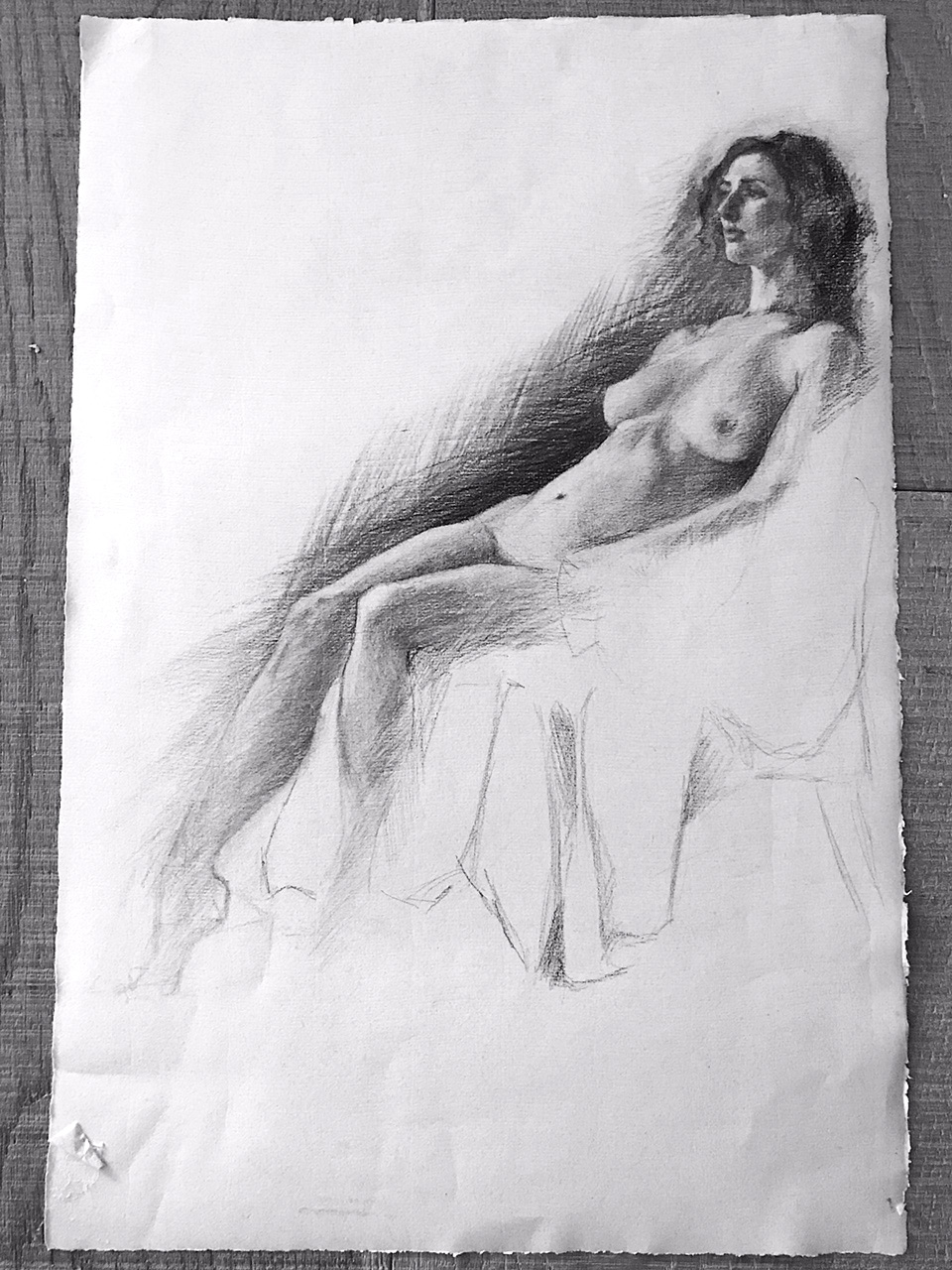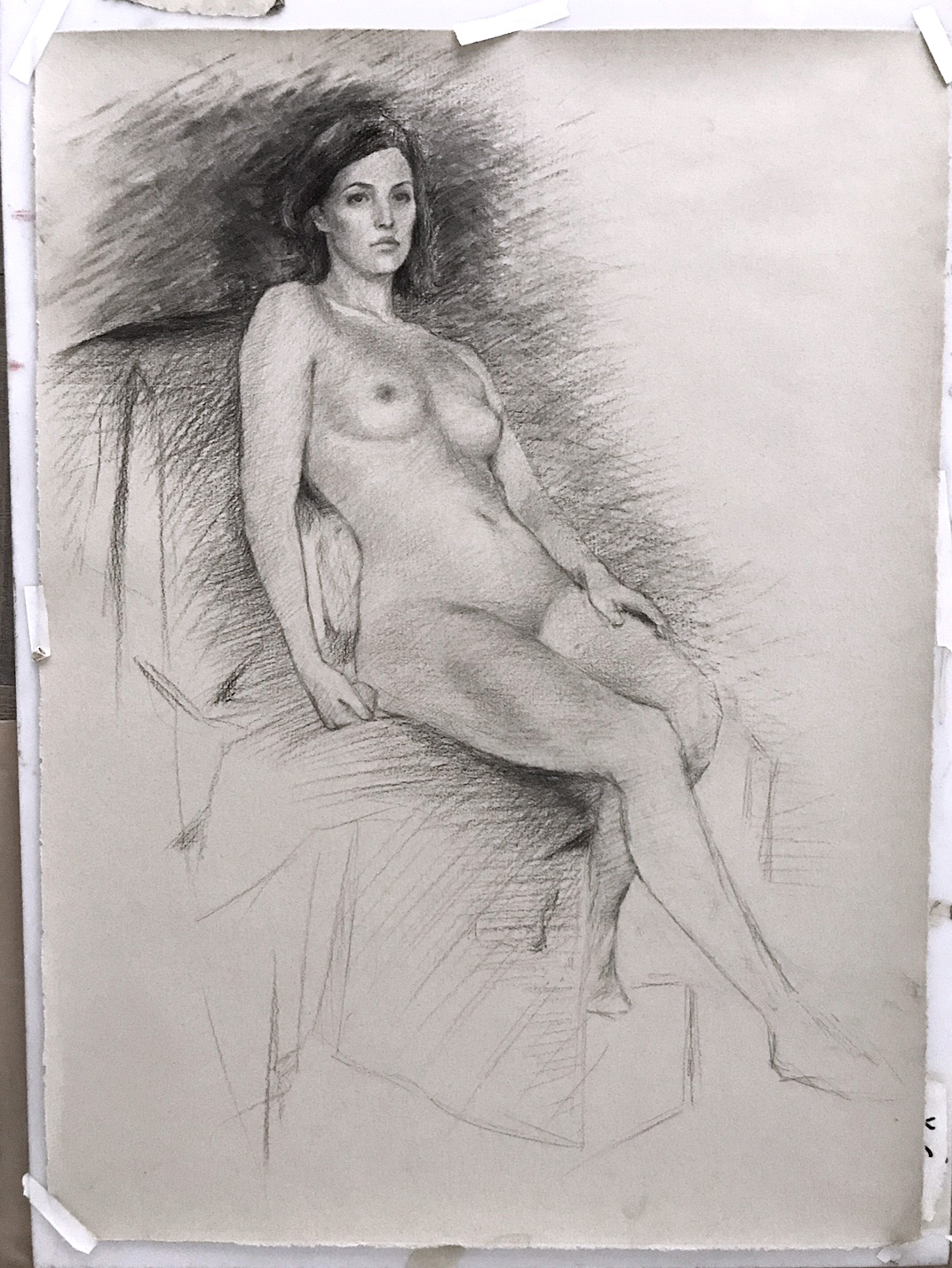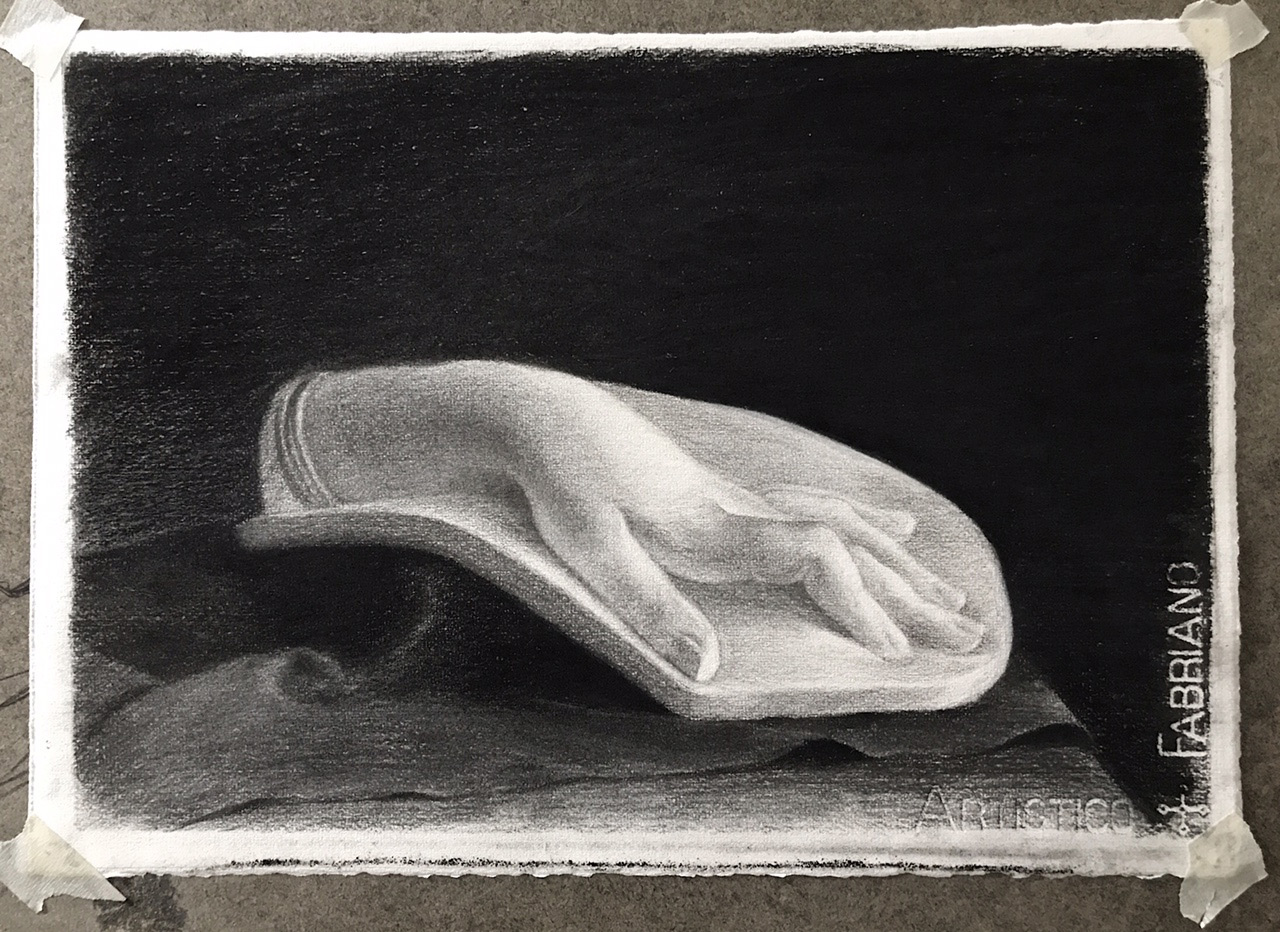ATELIER LIFE
Bria had the pleasure of training with world-renowned artist, Kamille Corry, in her hometown of Salt Lake City. The atelier was located in the heart of downtown. Classic atelier training systems enable the student to understand form and figure, build a strong foundation in human anatomy, and ultimately create accurately depicted, and therefore powerful, imagery.
bargue drawings
In the first parts of training, students are instructed to complete what are called "Bargue Drawings". Charles Bargue was a French painter in the 1800s who devised a drawing program in which students would be required to essentially copy drawings of plaster casts. He created lithographic plates of these drawings in which students could pick to study. This purpose of this method is to begin to illustrate how to simply shapes, correctly represent shadow and form, and bring a drawing to a finish.
“The atelier education movement seeks to revive the discoveries of the past while giving students the skills to move forward with their own vision. Ateliers take art students out of the classroom and place them back in the studio where they can learn their craft under the watchful guidance of a mentor artist, as so many great artists have done before them. Students are continually urged to study nature directly so they can make fresh discoveries that will contribute to the continuing flow of art history.”
Cast Drawings
Following successful completion of a series of Bargue drawings and master copies, the student is allowed to begin their first cast drawing. Beginning with more simple casts, like the eye of David (pictured, left) and working their way up to more complex, like Laocoon.
“The heart of the atelier curriculum is drawing from life and working on individually tailored independent projects. First-year students draw from a model each morning (or afternoon) for three hours. The length of the pose is determined by the goals of the instructor and can last anywhere from several days to several months. Shorter poses are often used to practice the first stage of a drawing, called the “block in”. The goal of drawing short poses is to create a strong gesture (feeling of movement) and build accuracy through repetition. A longer pose offers a chance for in-depth study of the effects of light hitting form, which is crucial in the painting process. Longer poses also reveal inaccuracies in the drawing, giving students a chance to make corrections over an extended period of time. This focus on making small changes increases the sensitivity of the student’s perception. ”







